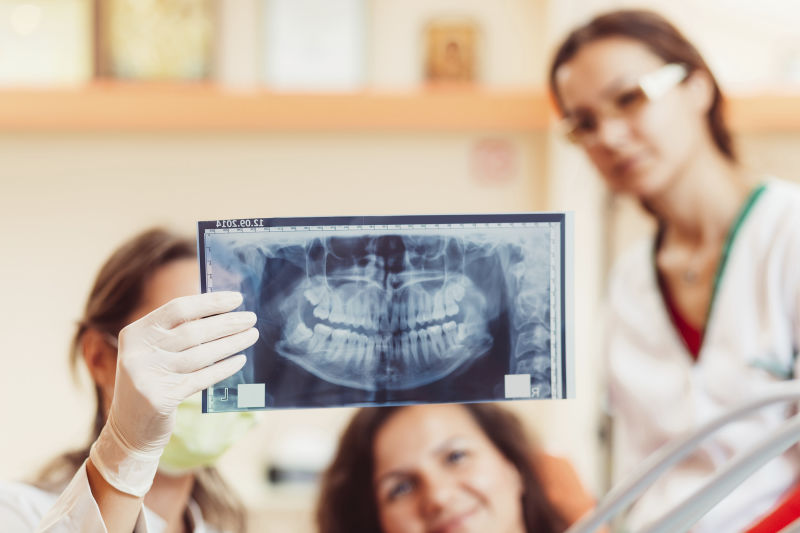But “in a way, it shouldn’t even be called insurance,” says Jeff Album, a vice president at Delta Dental, California’s largest dental insurer.
Album prefers calling it “a prepaid plan” for preventive and basic services, such as cleanings and fillings.
If you need a more complicated procedure, “you’re going to end up paying a big part of the bill out of pocket,” he says.
Here are five tips I'm offering on how to best use your dental benefits to save you money and frustration.
CHOOSE THE RIGHT PLAN
It’s open-enrollment season, time to determine which dental plan is best for you.
There are two primary types of dental plans: HMOs and PPOs.
The vast majority of Californians with commercial dental coverage – more than 14 million – have PPOs, the NADP says.
Here’s how a dental PPO works:
• In addition to your monthly premiums, you may owe a deductible before your insurance kicks in. Deductibles typically are under $50 and generally aren’t applied to preventive services, Album says.
• You face annual limits on your coverage, typically between $1,000 and $2,000, which is the maximum your insurance will pay out in one year.
• Twice-yearly cleanings and other preventive services are usually fully covered. You’ll pay a percentage of the cost for other services, such as 20 percent for a filling or 50 percent for a crown. Which adds up fast.
A dental HMO operates differently:
• Your premiums will be lower.
• You probably won’t have deductibles or benefit maximums.
• You’ll pay fixed copayments for treatments.
However, with an HMO, “your choices of dentists is much, much smaller,” Album says.
How much smaller? About 90 percent of California’s practicing dentists participate in PPOs, whereas about one quarter participate in HMOs, the NADP says.
You may also have fewer treatment options with an HMO, says Long Beach dentist Gary Glasband. For example, an HMO may agree to cover a metal crown. But if you prefer a ceramic crown that blends in with your other teeth, you may have to pay an additional cost, he says.
“You’re going to look at this choice differently if you’re a 20-year-old who has very little dental needs compared to someone who needs complex work,” he says.
If you have children, consider whether the plan covers orthodontic benefits, Glasband adds.
Once you’ve chosen your plan, understand your coverage. For instance, if your plan covers two cleanings a year, can they occur at any time or do they have to be more than six months apart?
“One cleaning every six months is not the same as two cleanings a year,” Glasband says.
STAY IN NETWORK
You will spend the least amount out of pocket by staying in your dental plan’s network, whether you have an HMO or a PPO.
With an HMO, you usually won’t receive any coverage out of network.
In the case of a PPO, you will receive the highest level of coverage from an in-network dentist plus reduced rates on the amount you have to spend out of pocket, Album says.
If you opt for an out-of-network dentist, you will still receive coverage, but at a reduced level.
Once your dentist has determined your treatment, always request a pre-treatment estimate from your plan. That will help you determine how much you’ll owe, Album says.
TIMING IS EVERYTHING
Schedule your procedures to make the most of your dental coverage.
Let’s say your dentist recommends four fillings and two crowns. If you do them all at once, you’ll likely exceed your maximum benefits and spend hundreds of dollars (or more) out of pocket.
If it’s not an emergency, find out when your annual benefits renew, Glasband says. For most people it’s Jan. 1.
In that case, Glasband suggests getting two fillings and a crown in November and the remaining procedures early the following year, which essentially doubles the amount of coverage at your disposal.
“Count on your dentist to help you time your benefits,” Album says.
SHOP AROUND
Like medical procedures, the prices of dental treatments can vary dramatically within the same region.
Why should you care about prices if you’re insured? Remember your annual maximums, which are easily surpassed with one dental procedure.
“Even if you have great coverage, you could be paying hundreds of dollars more out of pocket by choosing one dentist over another one down the street,” says Jason Szczuka, general manager of Brighter.com, a California company that manages dental benefits for some businesses.
Don’t be afraid to call around and ask dentists for their prices, he says.
You can also check online resources such as FAIR Health’s “Dental Cost Lookup” tool at FairHealthConsumer.org to get an idea of how much others are being charged for similar services.
DISCOUNT PLANS
If you don’t have dental insurance, consider purchasing a discount dental plan. These plans, which are not insurance, give you access to certain dentists who have agreed to perform procedures at discounted, cash prices.
The discounts are usually 20 to 30 percent, sometimes more, says Evelyn Ireland, executive director of the NADP.
If you’re interested in purchasing one, she suggests using the “Find a Dental Plan” tool on NADP’s website (www.nadp.org), or checking with DentalPlans.com or retailers such as Costco.
Questions for Emily: AskEmily@usc.edu
Click here to find previous Ask Emily columns.
